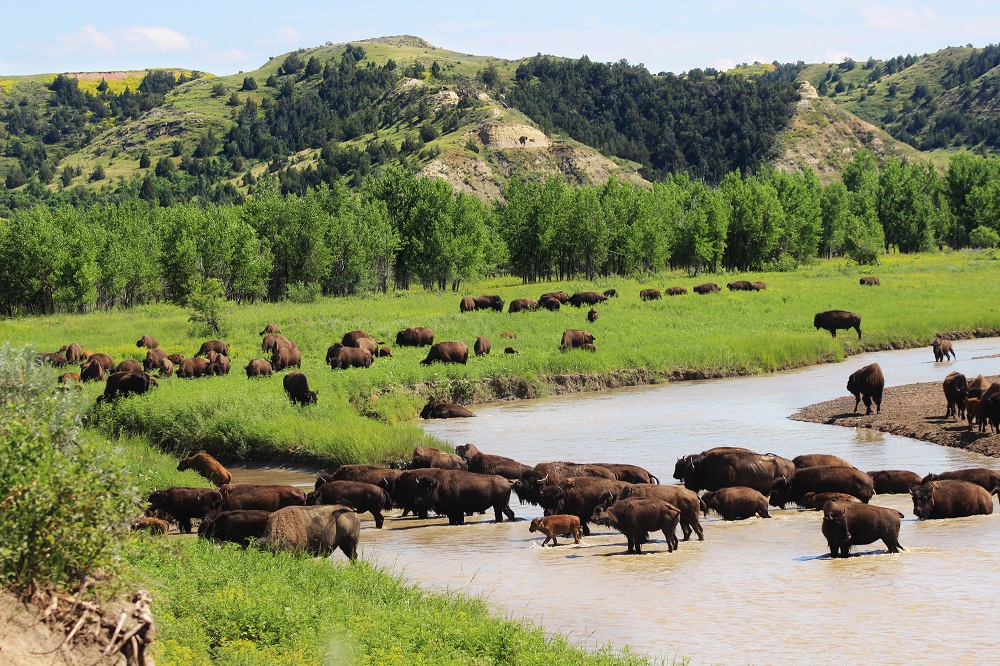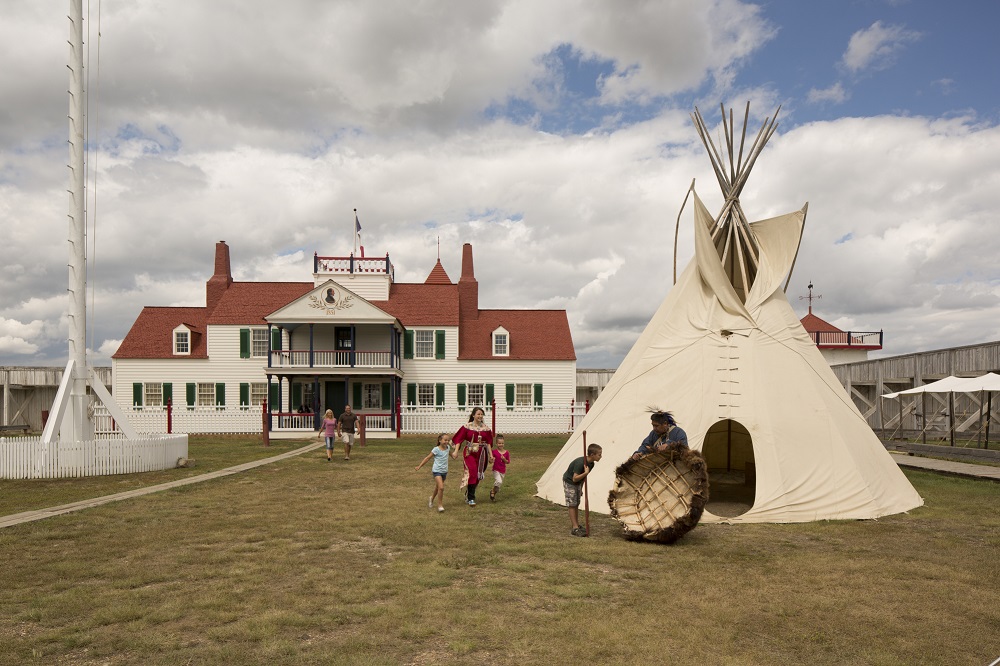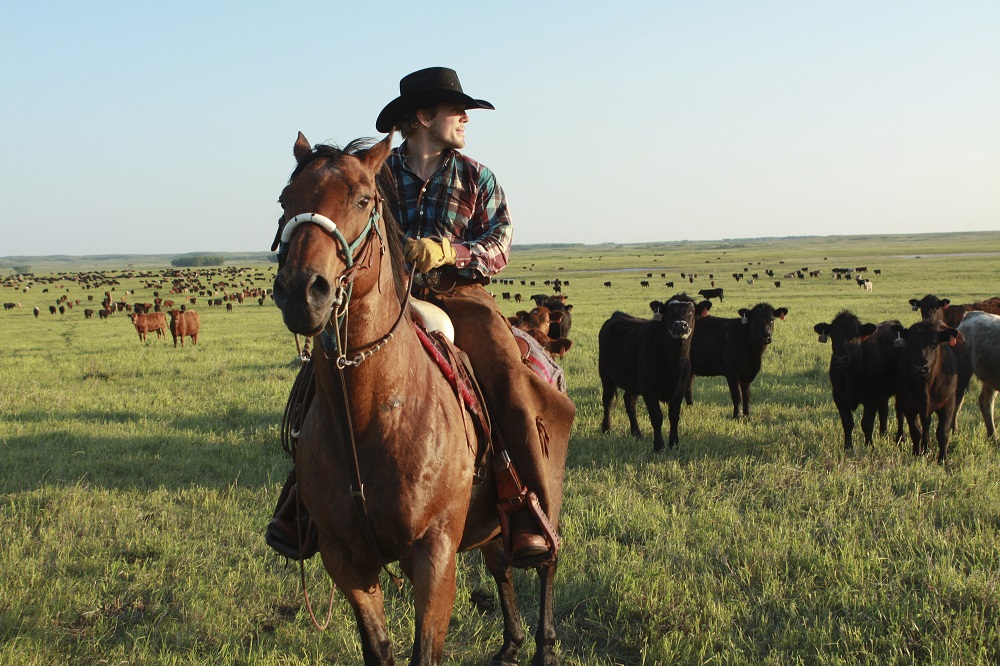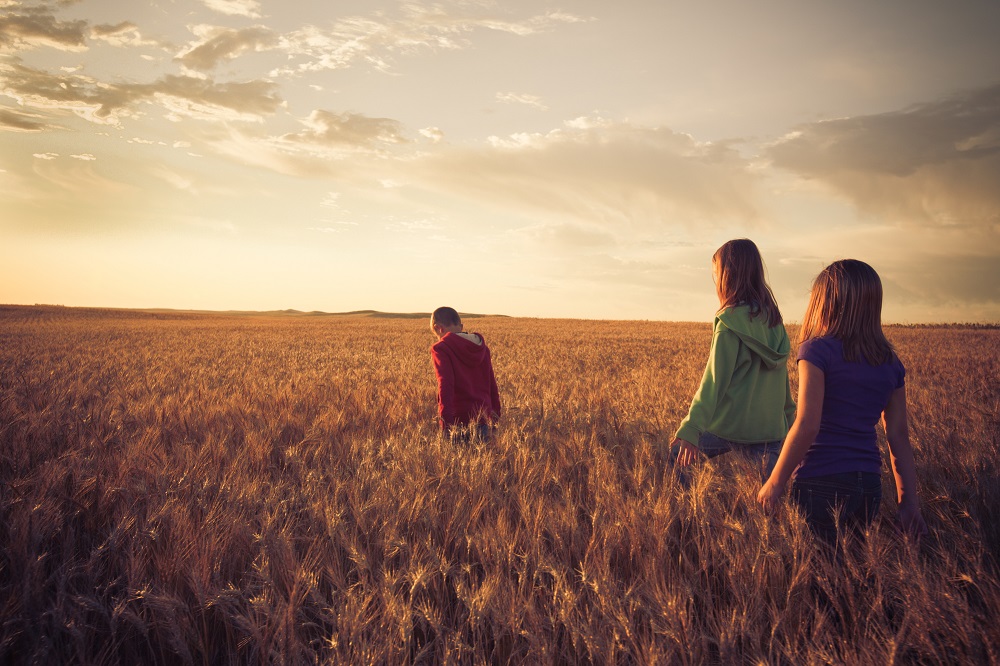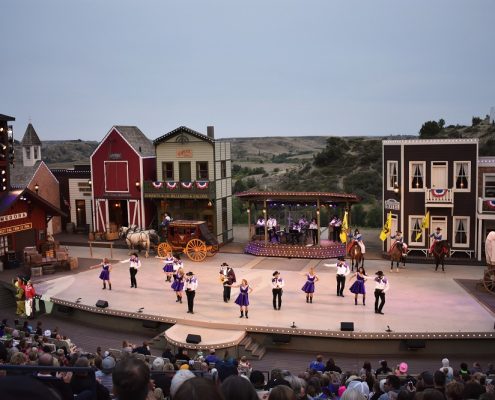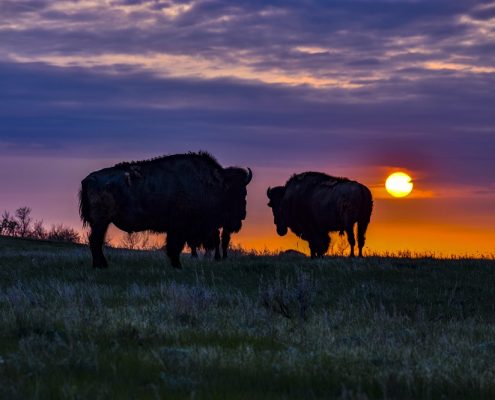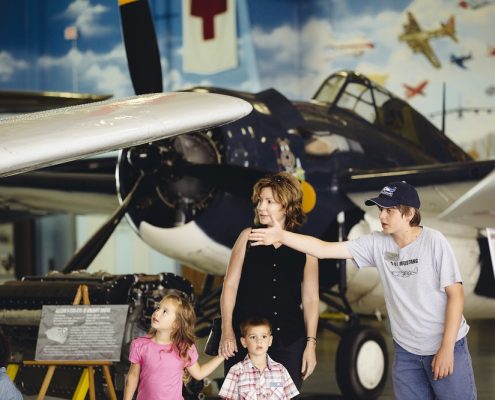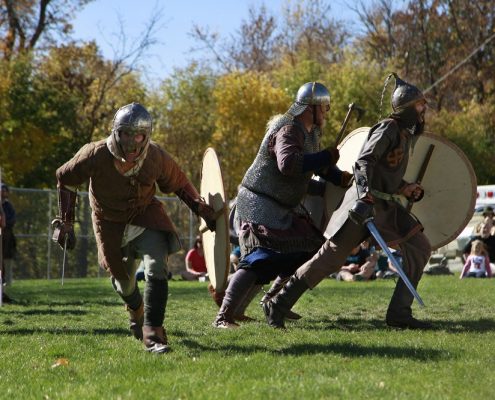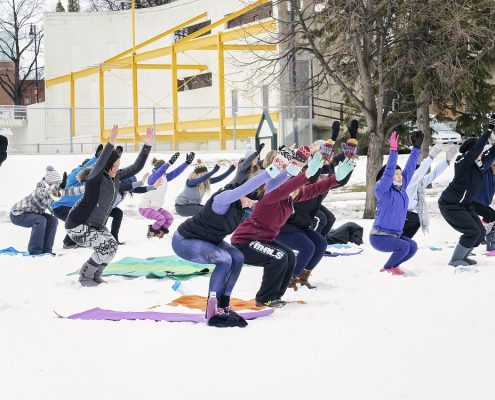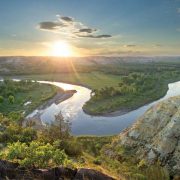8 Reasons North Dakota Should Be Your Next U.S. Road Trip
There are many reasons North Dakota should be your next road trip, but here are eight of the best, according to Caroline Davidson. Caroline should know, as she has visited North Dakota more times than she can count.
The wildlife
First off, North Dakota has the only national park named for a person, Theodore Roosevelt National Park which immortalises President Theodore Roosevelt who put national parks on the agenda (and on the map).
The two separate units of this spectacular tract of nature, north and south, remain pristine, with no buildings or man-made structures. However, the wildlife abounds in its natural habitat, including buffalo, horses, elk, white-tail and mule deer, prairie dogs and over 186 kinds of birds which can also be found here. To view the wildlife best, take the loop road -but take it slow and enjoy the spectacular scenery without the crowds. You’ll encounter more wildlife than you believed possible, but don’t forget, it is WILD; stay your distance and stay safe.
The best little cowboy town in the West
One of the best places in the continental USA to channel your inner cowboy or girl has to be Medora. Here’s why: with its original wooden sidewalks, the National Cowboy Museum, a place to stay called the Badlands Motel (or alternatively the Rough Riders Hotel); horses are still used as town transport and the Pitchfork Fondue as a popular dining option, what more could you possibly want?
Oh, you’d like a five-star golf course? Check! Bully Pulpit Golf Course is a challenging course surrounded by the spectacularly rugged scenery of the Badlands- and rated one of the 100 best public courses in the U.S.
You’d like a national park on the doorstep? Check! Medora is literally the gateway to the South Unit of Theodore Roosevelt National Park.
You need a running/hiking/biking trail to challenge the best? Check! The Maah Daah Hey trail is 150 miles of some of the best single-track in the world, traversing the Badlands, Little Missouri Grasslands, private land and the North and South units of Theodore Roosevelt National Park.
And you want a nightly entertainment spectacular? Check! The Medora Musical, held in a natural amphitheater outside town every evening in summer is a living slice of Americana that’ll have you hootin’and hollerin’ in your seat.
Learn American History while on the road
In North Dakota, history is only as old as yesterday’s birding adventure or Badland’s trail ride. Reach back to the Jurassic Period or into Lewis & Clark’s exploration of the West and discover the stories of great leaders like Sitting Bull and Theodore Roosevelt; a truly great reason to visit North Dakota on your next road trip.
Forts and tribes
Historically accurate relics of an earlier age of the cattle barons, railroads, the push west and conflicts between settlers and Native American tribes, you can visit many of the forts around North Dakota along the itinerary of your next road trip. Here are a few of the most interesting:
Fort Abraham Lincoln is conveniently located outside North Dakota’s capitol, Bismarck. It’s an excellent choice for a one-stop history lesson including both the Native Americans with the authentic On-A-Slant Village recreation allowing visitors to get an up-close and personal glimpse of the way of life of the Mandan people and their cultural heritage. And on the ‘other side of the fence’, step inside the faithfully recreated General and Mrs Custer’s house with an army aide to show you around while they are out; all taking place as if you are really back in their day (rookie tip: don’t mention mobile phones). Ask all the questions you want and check out exactly how a General lived back in the 1800s.
Forth Berholdt Indian Reservation is located in the central West of North Dakota, and is home for the federally recognised Mandan, Hidatsa, and Arikara Nation, also known as the Three Affiliated Tribes. The reservation includes lands on both sides of the Missouri River.
Fort Union Trading Post National Historic Site is considered the grandest fort on the Upper Missouri River. Between 1828 and 1867, Fort Union was the most important fur trade post in the area. Here, the Assiniboine and six other Northern Plains Indian Tribes exchanged buffalo robes and smaller furs for goods from around the world, including cloth, guns, blankets, and beads. A fortress of peaceful coexistence, the post annually traded over 25,000 buffalo robes and $100,000 in merchandise.
Fort Buford State Historic Site Fort Buford was built in 1866 and became a major supply depot for military field operations. Fort Buford, located near present-day Williston, was one of a few military posts established to protect overland and river routes used by immigrants settling the West. However, it is probably best remembered as the place where the famous Hunkpapa Sioux leader, Sitting Bull, surrendered in 1881.
Explorers Lewis and Clark were among the earliest visitors to North Dakota. The expedition spent 214 days in North Dakota on two separate visits. The group spent 146 days on its outbound trip in October of 1804, when it set up a winter camp near Washburn. The second visit was on its return from the Pacific. The expedition stopped again in August of 1806, which was when Sakakawea was returned to her home. One quarter of the expedition was spent in what is now called North Dakota. They have mapped out a trail for you to follow through North Dakota that takes you on their route.
Native American Tribes and experiences
North Dakota is home to five federally recognized Native American Reservations and tribes including: Mandan, Hidatsa, & Arikara Nation (Three Affiliated Tribes), the Spirit Lake Nation, the Standing Rock Sioux Tribe, the Turtle Mountain Band of Chippewa Indians, and the Sisseton-Wahpeton Oyate Nation.
Check out some of the enriching experiences you can enjoy: the United Tribes Powow is the culmination of the year’s events held around the country and is one of the largest, drawing tribes from around the U.S. to take part in drumming, dancing and costume displays based on a rich tribal culture and tradition. The event runs over three days in early October and is an eye-opening way to immerse in living, evolving, Native American culture. Be sure to respect the people and the traditions and you will be richer for the experience.
Stay in a yurt or a teepee
When it comes to ‘yurting’ North Dakota has you covered! Three state parks feature yurts as part of their lodging packages: Cross Ranch State Park near Washburn, Lake Metigoshe State Park near Bottineau and Fort Ransom State Park near Fort Ransom. So when it comes to finding a unique winter stay you will be spoilt for choice. Yurts fall somewhere between a tent and cabin and they have transformed winter camping in the state. The yurts in North Dakota’s state parks are luxurious with a rustic backwoods charm. They have heat and electricity, meaning there’s no need to stoke the fire after returning from a chilly hike.
Get your cowgirl on with a ranch stay
Black Leg Ranch, just south of Bismarck, is one of the oldest working cattle ranches still in operation today. A family-owned ranch with a rich and legendary history including outlaws, it’s home to over 17000 acres of grassland prairie near the Missouri River, including buffalo wallows, the ghost town of Brittin, abandoned farmsteads, post office foundation, quicksand,1800s wagon trails, abandoned railroads and trestles, native American teepee rings and artifacts and much more.
When I first visited, the Doan family’s three sons, were hardworking cowboys (the real deal) and one, Jay, had even had a starring role in a movie (and, to me, was the nearest thing to Brad Pitt).
The ranch offered cabin accommodation for visitors keen to fish and hunt, and ‘dudes’ like us wanting to learn the arcane arts of the cowboy; ropin’ ridin’ and ranchin’.
Over the years since then, the ranch has grown and diversified and gone from strength to strength with a new lodge, a brewery and many significant awards under their collective belt. Now it’s renown as the place to enjoy the local brew, locally-raised grass-fed beef or buffalo …or even get married (but first find your own cowboy or girl)
Fargo – find the woodchipper
Yes, fans, the real woodchipper from the movie can be viewed at the art-deco theatre in Fargo. But this should be an added extra. Fargo the town has much more to offer form a quirky Frostival festival held in winter with more fun family activities than the temperatures suggest, to the Fargo Air Museum, loads of breweries and craft beers, the Hotel Donaldson, a boutique gem and so much more.
After some outdoor adventures? Be sure to check out Lindenwood Park. This is the largest multi-use park in Fargo, and it is located on Roger Maris Drive along the Red River. The Universal Playground is a large playground that is accessible to all children. It features several shelters fitted will amenities that can be used for picnics as well as baseball fields. There are several trails in the park including skating trails, and bicycles can be rented during the warmer summer months. The park also has a scenic campground.
For family fun pack up the kids and head to the Children’s Museum at Yunker Farm. Located on 28th Avenue North in Fargo, the Children’s Museum at Yunker Farm offers hands-on exhibits and many other attractions that keep curious children entertained while learning.
The best part… it all comes neatly summarised best by the town slogan: Fargo: North of Normal!
Agritourism (Fun with Farming)
Agritourism, the combination of agriculture and tourism, is the practice of inviting guests to visit and/or participate in normal farm or ranch activities. It is growing in popularity and diversifying in product to include working farms and ranch visits, vineyards, wineries and breweries, pumpkin patches, orchards for farm festivals, corn mazes and u-pick fun. North Dakota has become a standout destination for agritourism. This is no surprise with the region ranking first in the production of spring wheat, durum wheat, sunflowers, barley, honey and other crops.
Nordic Dakota; the Scandinavia of the US
One in three North Dakotans; 38% of the populations has Nordic heritage, the highest percentage in the US. Immigrating from the 1870s to the north and central part of the state, they settled along the main line of the Great Northern Railroad.
The Scandinavian Heritage Park in Minot (rhymes with Why not!) North Dakota is the only living outdoor museum in the world to feature all five Nordic countries: Norway, Finland, Sweden, Denmark and Iceland. It’s free, spread over parklands and features a Norwegian wooden stave church and a Danish windmill; well worth a day’s exploration.
And if you arrive in fall, be sure to check out Norsk Hostfest; the largest Scandinavian event on the continent, celebrated in Minot.
But wherever the people in North Dakota are from, one thing is certain; they are incredibly hospitable, proud of their state and will go out of their way to help you and show you around.

